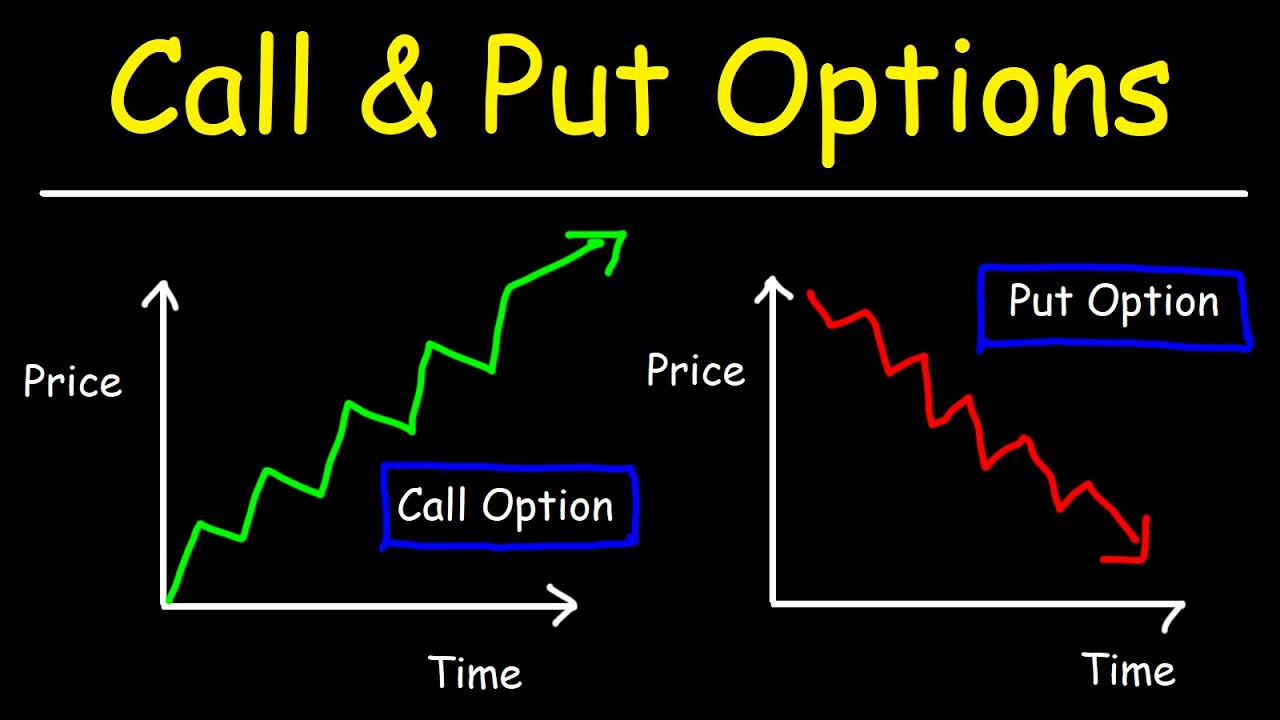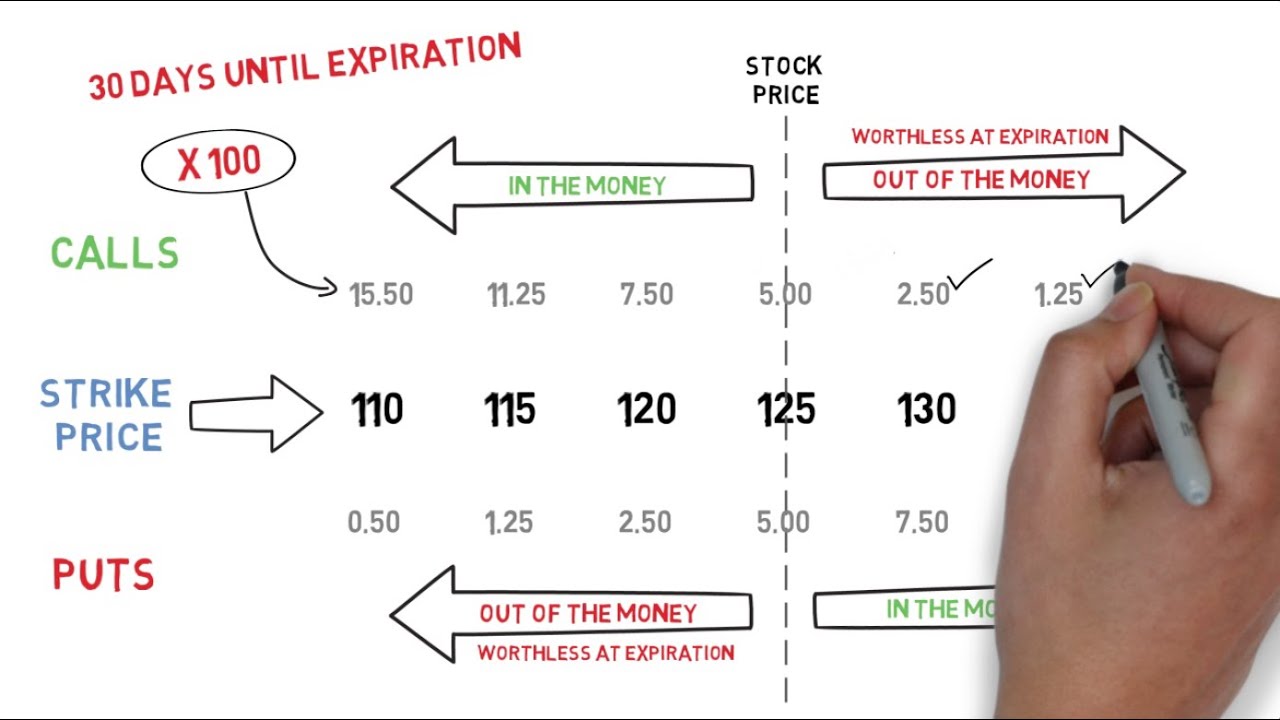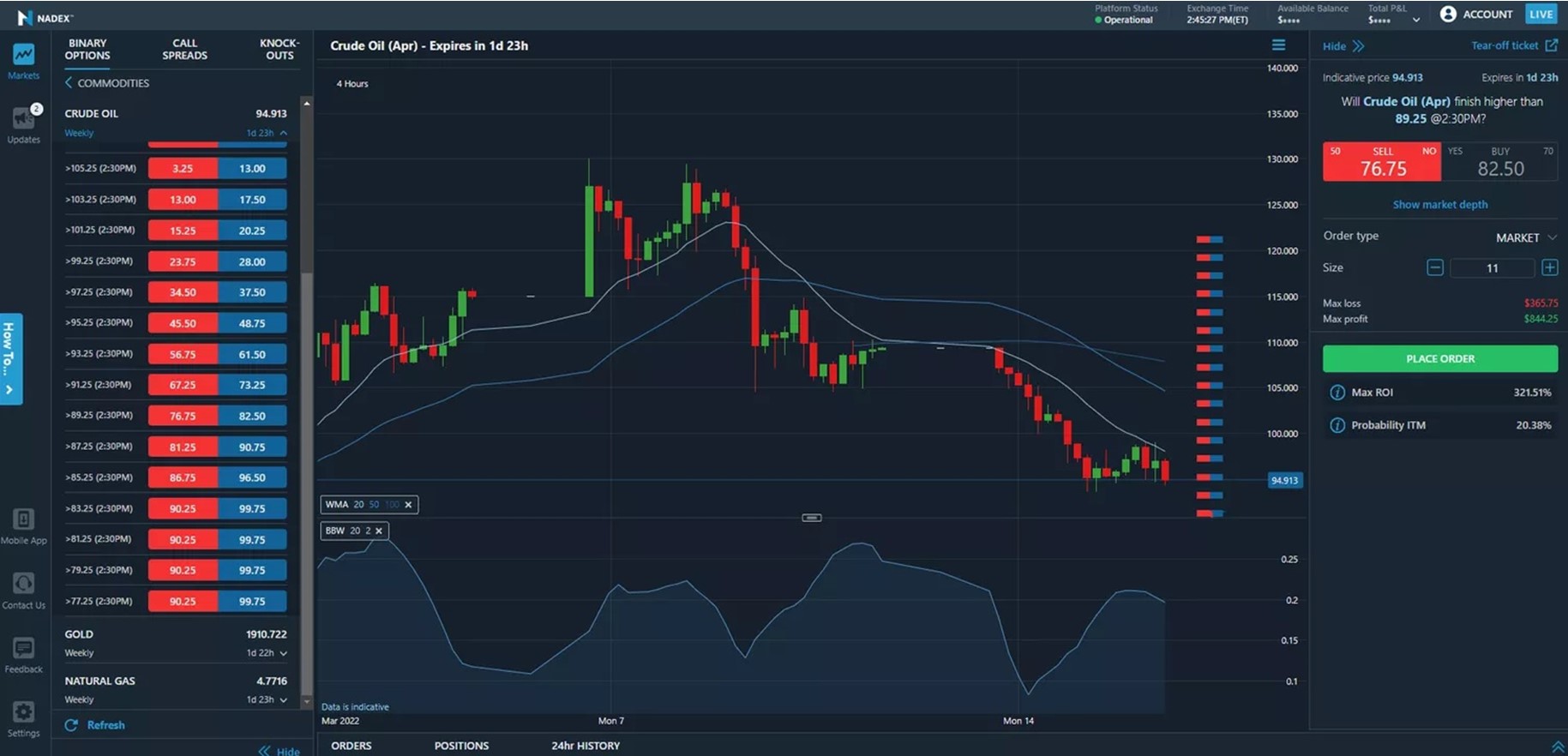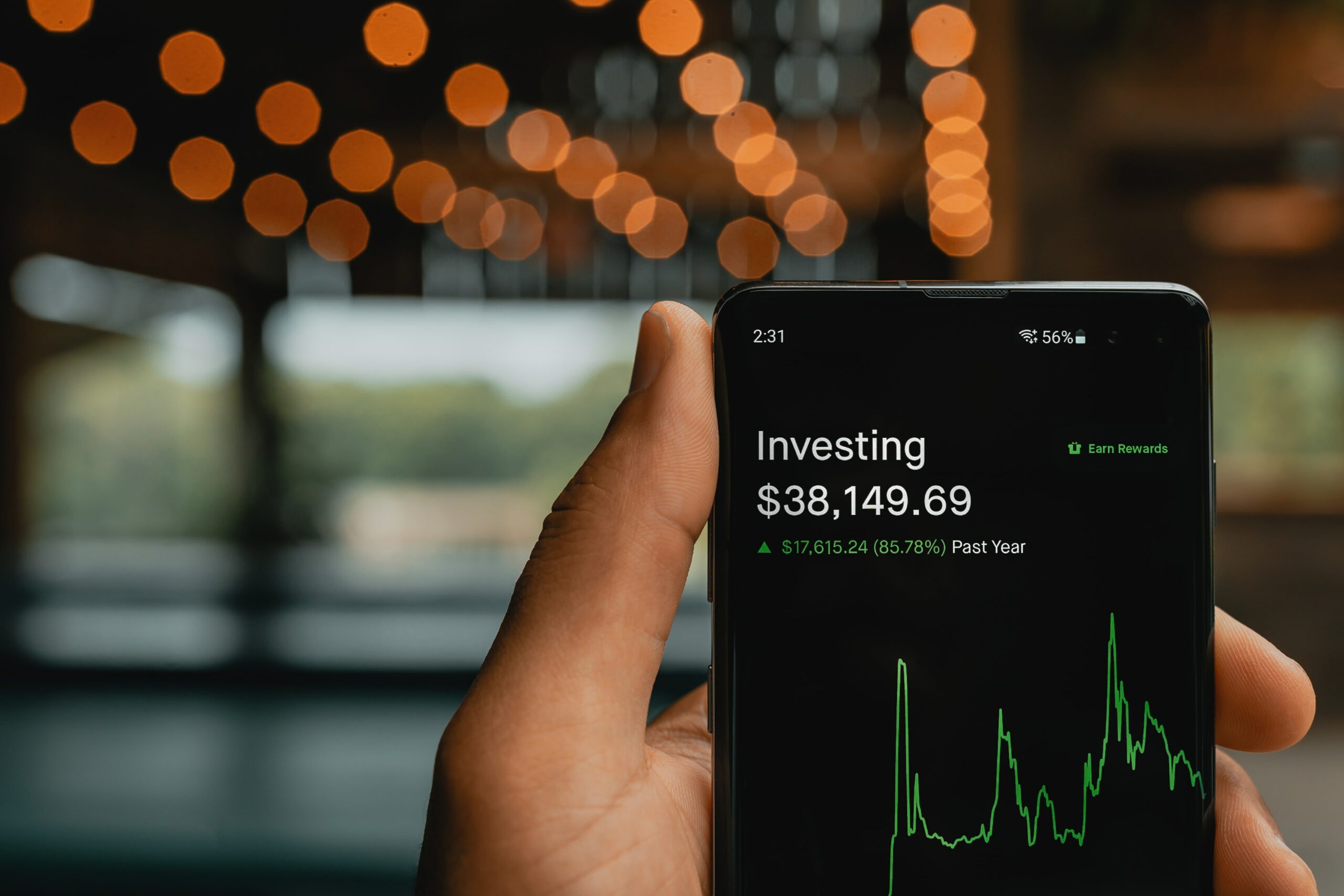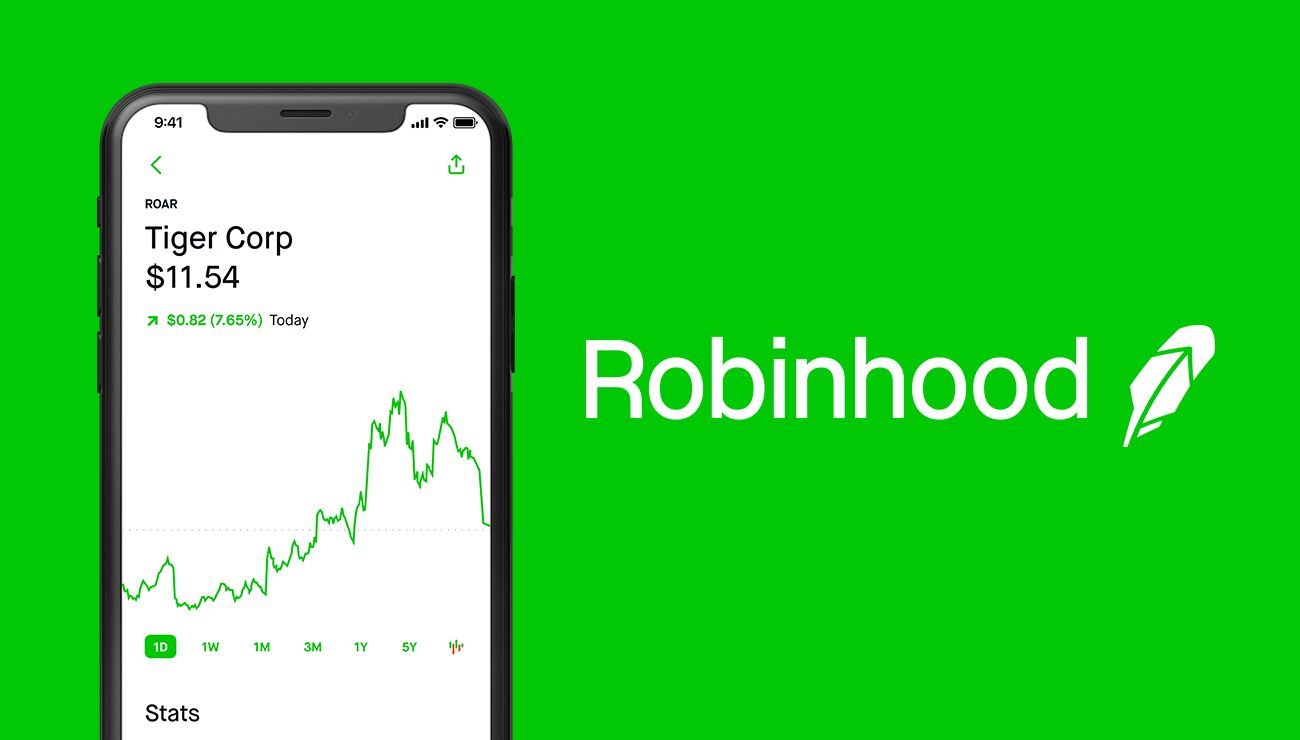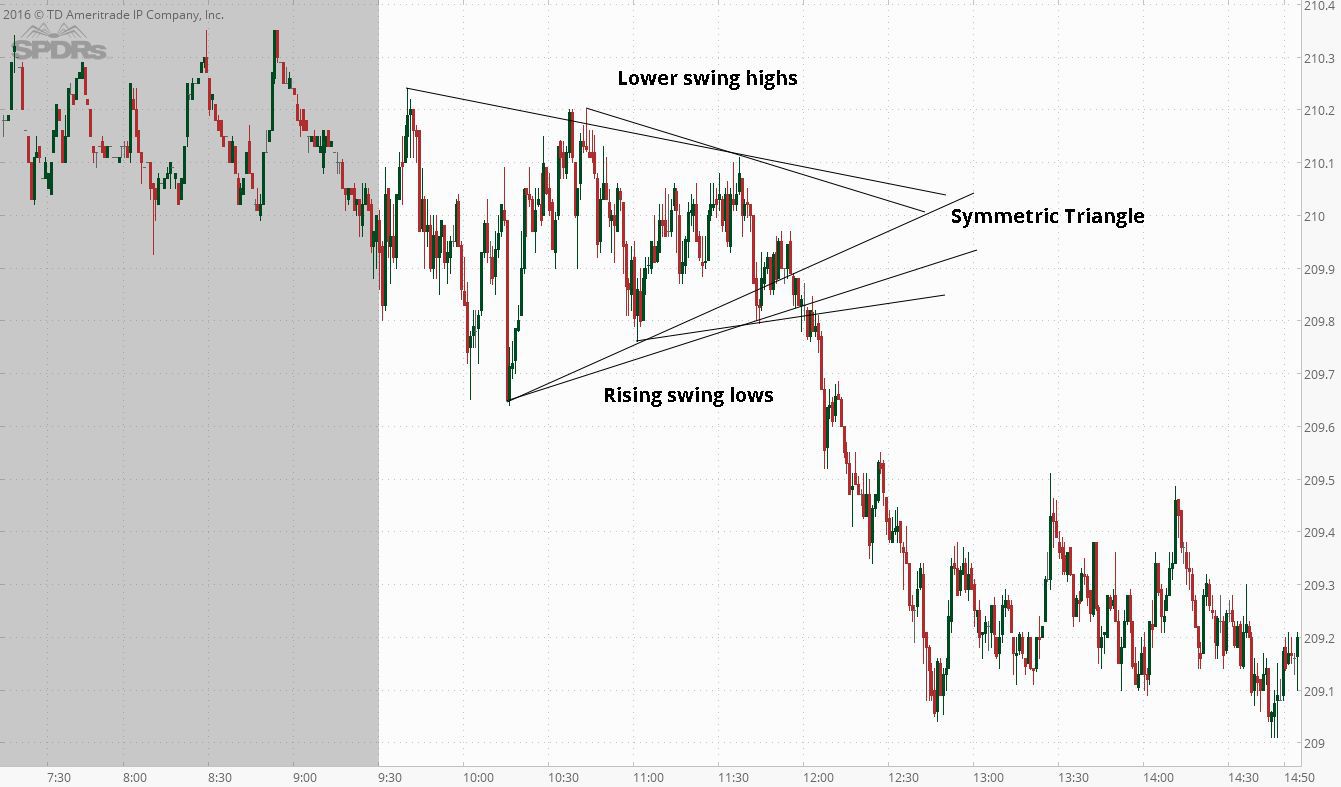Introduction
Welcome to the world of stock trading! If you’re new to the game, you may have come across terms like “put option” and wondered what they mean. Put options are a fundamental aspect of trading that can offer investors a range of opportunities and strategies to navigate the market.
Put options provide traders with the ability to profit from a decline in the price of a stock. They serve as a form of insurance against potential losses and allow investors to monetize on downward movements in the market. Whether you’re a beginner or an experienced trader, understanding what a put option is and how it works is essential to your success.
In this article, we will take a closer look at the definition of a put option, how it works, the key elements of a put option, as well as the various strategies and considerations associated with trading them. By the end of this guide, you will have a solid understanding of the fundamentals of put options and be ready to incorporate them into your trading arsenal.
So, let’s dive in and explore the exciting world of put options!
Definition of a Put Option
A put option is a type of financial contract that gives the owner the right, but not the obligation, to sell a specific asset, such as a stock, at a predetermined price within a specified time period. It is essentially a bearish bet, allowing the holder to profit if the price of the underlying asset decreases.
When you buy a put option, you are purchasing the right to sell the underlying asset at the strike price, regardless of its current market value. This gives you the ability to sell the asset at a higher price, protecting you from potential losses if the market price drops.
The strike price, also known as the exercise price, is the price at which the underlying asset must be sold if the put option is exercised. It is agreed upon at the time of purchasing the contract and remains fixed throughout its duration.
The expiration date is the final date by which the put option must be exercised. Once the expiration date is reached, the contract becomes null and void.
Put options are commonly used as a means of portfolio hedging. By holding put options on stocks you own, you can offset potential losses during market downturns. This provides a level of insurance and helps protect your investment against adverse price movements.
It’s important to note that a put option has an upfront cost, known as the premium. The premium is the price you pay to acquire the right to sell the asset at the strike price. The premium is influenced by various factors, including the underlying asset’s price volatility, time until expiration, and market conditions.
In summary, a put option is a financial instrument that grants the holder the right to sell an asset at a predetermined price within a specified time frame. It offers protection against potential losses and serves as a valuable tool for traders and investors to navigate bearish market conditions.
How a Put Option Works
To understand how a put option works, let’s walk through a hypothetical example. Imagine you are bearish on a particular stock, ABC Inc., currently trading at $50 per share. You believe that the stock’s price will decline in the near future and want to profit from this downward movement.
You decide to buy a put option on ABC Inc., with a strike price of $45 and an expiration date one month from now. By purchasing this put option, you acquire the right to sell 100 shares of ABC Inc. at $45 per share within the specified time frame.
As the price of ABC Inc. drops over the next month and reaches $40 per share, your put option becomes more valuable. At this point, you have two options:
- Exercise the put option: You can sell your 100 shares of ABC Inc. for $45 per share, even though the market value is only $40 per share. This allows you to make a profit of $5 per share, or $500 in total.
- Sell the put option: Instead of exercising the option, you have the choice to sell the put option itself. As the value of the option increases with the decline in the stock price, you can sell it to another investor for a higher premium than what you initially paid. This allows you to profit from the price difference without actually owning the underlying shares.
It’s important to note that if the price of ABC Inc. remains above the strike price of $45 by the expiration date, the put option will expire worthless. In this scenario, you would lose the premium you paid to acquire the option.
The beauty of a put option is that it allows you to profit from a decline in the stock’s price without actually owning the shares. This makes put options a powerful tool for speculating on downward market movements and implementing hedging strategies to protect your investments.
Keep in mind that the value of a put option is influenced by various factors, including the current stock price, time until expiration, volatility, and interest rates. It’s crucial to consider these factors when trading put options to maximize potential profits and manage risks effectively.
In summary, a put option provides you with the right to sell an asset at a predetermined price within a specified time frame. By purchasing put options, you can profit from a decline in the asset’s price, whether by exercising the option or selling it to another investor. Understanding how put options work is essential for traders seeking to take advantage of bearish market conditions or implement risk management strategies.
Basic Elements of a Put Option
Before diving deeper into the world of put options, it’s important to familiarize yourself with the basic elements that make up these financial instruments. Understanding these components will help you navigate the complexities of trading put options successfully.
1. Underlying Asset: The underlying asset refers to the financial instrument (e.g. stocks, bonds, commodities) on which the put option is based. The value of the put option is derived from the price movement of this underlying asset.
2. Strike Price: The strike price, also known as the exercise price, is the predetermined price at which the underlying asset can be sold. The buyer of the put option has the right to sell the asset at this price, regardless of its current market value.
3. Expiration Date: The expiration date is the date by which the put option must be exercised. After the expiration date, the option becomes null and void. It’s essential to keep track of expiration dates when trading put options as they dictate the timeframe for potential profit or loss.
4. Premium: The premium is the price that the buyer pays to acquire the put option. It represents the cost of holding the option and is influenced by various factors, including the volatility of the underlying asset, time until expiration, and market conditions.
5. Option Contract: The option contract is a legally binding agreement between the buyer and seller of the put option. It outlines the terms of the option, including the underlying asset, strike price, expiration date, and other relevant details.
6. Option Holder: The option holder, also known as the buyer, is the individual or entity that purchases the put option. They have the right to exercise the option or sell it to another investor before the expiration date.
7. Option Writer: The option writer, also known as the seller, is the individual or entity that creates and sells the put option. They receive the premium from the buyer and take on the obligation to fulfill the terms of the option if it is exercised.
8. Intrinsic Value: The intrinsic value of a put option refers to the difference between the strike price and the current market price of the underlying asset. If the underlying asset’s price is below the strike price, the put option has intrinsic value, as it allows the option holder to sell the asset at a higher price.
9. Time Value: The time value of a put option represents the portion of its premium that is attributable to the time remaining until expiration. As the expiration date approaches, the time value diminishes, and the option’s value becomes increasingly reliant on its intrinsic value.
Understanding these basic elements is crucial for effectively trading put options. They form the foundation of any put option transaction and impact the potential profitability and risks associated with these financial instruments. By grasping these concepts, you can make informed investment decisions and navigate the world of put options with confidence.
Buying a Put Option
Buying a put option involves the process of acquiring a contract that grants you the right to sell an asset at a specific price within a specified time period. Investors buy put options for various reasons, such as speculation, hedging, or protecting an existing investment. Let’s delve into the process of buying a put option and the key considerations involved.
1. Determine your objective: Before buying a put option, it’s essential to define your objective. Are you looking to profit from a decline in the price of a specific stock or hedge against potential losses in your portfolio? Clarifying your objective will help guide your decision-making process.
2. Select the underlying asset: Choose the asset on which you want to buy a put option. It can be a stock, index, commodity, or any other tradable financial instrument. Research and analyze the asset’s price history, performance, and market factors that may influence its future movements.
3. Determine the strike price and expiration date: Set the strike price and expiration date that align with your trading strategy and time horizon. The strike price should be a level at which you expect the asset’s price to drop below. The expiration date should provide enough time for your forecast to materialize.
4. Assess the premium: The premium is the cost of buying the put option. Evaluate the premium based on factors such as the volatility of the underlying asset, time until expiration, and prevailing market conditions. Higher volatility and longer time until expiration tend to increase the premium.
5. Place your order: Contact your broker or use a trading platform to place your order. Specify the quantity of put options you want to purchase, the strike price, and the expiration date. Review the order details and confirm your purchase.
6. Monitor your position: Once you have bought a put option, it’s important to monitor your position closely. Keep an eye on the underlying asset’s price movement and assess whether it aligns with your initial expectations. Make informed decisions about when to exercise the option, sell the option, or let it expire.
7. Manage risk: Like any investment, buying a put option involves risk. Determine your risk tolerance and consider implementing risk management strategies, such as setting stop-loss orders or diversifying your portfolio. Be aware that if the underlying asset’s price remains above the strike price, the put option may expire worthless, resulting in a loss of the premium paid.
Buying a put option can be an effective way to profit from a decline in the price of an asset or protect your portfolio against potential losses. However, it requires careful analysis, proper risk management, and staying informed about market trends. By understanding the process and considerations involved in buying a put option, you can make informed investment decisions and enhance your trading strategies.
Selling a Put Option
Selling a put option involves the process of writing and selling a contract that grants another investor the right to sell an asset at a specific price within a specified time period. By selling a put option, you assume the obligation to buy the underlying asset at the strike price if the option is exercised. Let’s explore the process of selling a put option and the key considerations involved.
1. Choose the underlying asset: Determine the asset on which you want to sell a put option. It can be a stock, index, commodity, or any other tradable financial instrument. Research and analyze the asset’s potential price movements and market factors that may influence its future performance.
2. Set the strike price and expiration date: Determine the strike price at which you are willing to buy the underlying asset if the option is exercised. The strike price should be set at a level that you consider attractive or aligned with your investment objectives. Choose an expiration date that provides an adequate time frame for your strategy to play out.
3. Assess the premium: Determine the premium you will receive for selling the put option. Consider factors like the volatility of the underlying asset, time until expiration, and prevailing market conditions. Higher volatility and longer time until expiration tend to increase the premium.
4. Understand the obligations: When selling a put option, remember that you are assuming the obligation to buy the underlying asset if the option is exercised. Be prepared to fulfill this obligation and have the necessary funds or margin available to make the purchase.
5. Place your order: Contact your broker or use a trading platform to place your order for selling the put option. Specify the quantity of options you want to sell, the strike price, and the expiration date. Review the order details and confirm your sale.
6. Monitor your position: Once you have sold a put option, monitor your position closely. Keep an eye on the underlying asset’s price movement and assess the likelihood of the option being exercised. Adjust your strategy if necessary and be prepared to buy the underlying asset if needed.
7. Manage risk: Selling a put option involves potential risks. If the underlying asset’s price drops below the strike price, you may be obligated to buy the asset at a higher price than the market value. Understand the risks involved, set risk management parameters, and consider protective strategies like setting stop-loss orders or using spreads to limit potential losses.
Selling a put option can be a way to generate income or acquire the underlying asset at a desired price. However, it requires careful analysis, risk management, and understanding of the obligations involved. By considering these factors and staying informed about market trends, you can effectively sell put options and enhance your trading strategies.
Profit and Loss Potential of a Put Option
Understanding the profit and loss potential of a put option is essential for evaluating its effectiveness as a trading strategy. A put option provides the opportunity to profit from a decline in the price of an underlying asset, while also exposing traders to potential losses. Let’s explore the profit and loss potential of a put option in more detail.
Profit Potential: The profit potential of a put option is determined by the difference between the strike price and the market price of the underlying asset. When the market price falls below the strike price, the option holder can exercise the put option and sell the asset at a higher price than its current value. The profit is calculated as the difference between the strike price and the market price, minus the premium paid for the option.
For example, if you bought a put option with a strike price of $50 and the market price of the underlying asset drops to $40, you can potentially make a profit of $10 per share, minus the premium paid for the option. The total profit will depend on the number of shares covered by the option contract.
Loss Potential: The loss potential of a put option is limited to the premium paid for the option. If the market price of the underlying asset remains above the strike price, the option is unlikely to be exercised, and the premium will be the total loss. This scenario occurs when the anticipation of a price decline does not materialize, resulting in the option expiring out of the money.
It’s important to note that the loss potential is fixed and known upfront, making put options relatively less risky than short-selling the underlying asset directly. With a put option, you have the ability to define your potential loss and manage your risk accordingly.
Breakeven Point: The breakeven point of a put option is the point at which the profit from exercising the option equals the premium paid. It is the price level at which the underlying asset’s market price would need to fall to cover the premium paid for the option. Below the breakeven point, the option becomes profitable.
Calculating the breakeven point involves adding the strike price and the premium. For example, if the strike price is $50 and the premium paid is $3, the breakeven point would be $53. This means the market price of the underlying asset would need to decline below $53 for the option to generate a profit.
In summary, the profit potential of a put option arises when the market price of the underlying asset falls below the strike price, allowing the option holder to sell the asset at a higher price. The loss potential is limited to the premium paid for the option. Understanding the profit and loss potential of a put option is vital for managing risk and making informed trading decisions.
Uses of Put Options
Put options serve various purposes for traders and investors. Understanding the different uses of put options can help you develop effective trading strategies and manage risk in the financial markets. Let’s explore some common applications of put options.
1. Speculation: Traders often use put options to speculate on the price movement of an underlying asset. If they anticipate a decline in the asset’s price, they can purchase put options to profit from the downward movement. This allows traders to potentially generate profits in bearish market conditions.
2. Hedging: Put options are frequently used as a form of portfolio protection or hedging strategy. By buying put options on stocks or other assets in their portfolio, investors can offset potential losses in the event of a market downturn. If the market declines, the profits from the put options can help offset the losses incurred on the underlying assets.
3. Risk Management: Put options are effective risk management tools that allow investors to control potential losses. They provide a level of insurance by allowing investors to sell assets at predetermined prices, protecting against adverse price movements. By incorporating put options into their portfolio, investors can mitigate downside risk and manage their overall exposure.
4. Income Generation: Some market participants engage in selling put options to earn premium income. By assuming the obligation to buy an underlying asset at a certain price, option sellers receive the premium from option buyers. This strategy can be profitable if the option expires worthless, allowing the sellers to keep the premium as profit.
5. Buying Opportunities: Put options can provide buying opportunities for investors. When market sentiment turns bearish, the prices of put options tend to increase. This allows investors with a bullish outlook to sell put options and earn premiums, potentially gaining a lower entry price for acquiring the underlying asset if the option is exercised.
6. Arbitrage Opportunities: Put options can present arbitrage opportunities for sophisticated traders. These traders exploit pricing discrepancies between the options and the underlying assets to generate profits with minimal risk. By simultaneously buying the underlying asset and selling the corresponding put options, traders can take advantage of mispricing and market inefficiencies.
7. Tax Planning: Put options can be utilized for tax planning purposes. In some jurisdictions, selling put options to generate income can be more tax-efficient compared to selling the underlying assets. Consult with a tax advisor or professional to understand the specific tax implications and benefits associated with using put options for tax planning.
These are just a few examples of the uses of put options in the financial markets. The versatility of put options allows traders and investors to implement a range of strategies to navigate market dynamics and achieve their financial objectives.
Risks and Considerations
While put options offer various opportunities and benefits, it is crucial to consider the associated risks and make informed decisions when incorporating them into your trading strategies. Understanding the risks and considerations will help you navigate the complexities of trading put options effectively. Let’s explore some of the main risks and considerations to keep in mind:
1. Limited Timeframe: Put options have expiration dates, limiting the time available to profit from anticipated price declines. If the price of the underlying asset does not decline within the specified timeframe, the option may expire worthless, resulting in a loss of the premium paid.
2. Volatility Risk: The value of a put option is affected by the volatility of the underlying asset. Higher levels of volatility can increase option premiums, making them more expensive to purchase. However, if the volatility decreases, the value of the put option may decline, leading to potential losses.
3. Market Risk: Put options are subject to general market risk. Factors such as economic conditions, geopolitical events, and unexpected market developments can impact the underlying asset’s price and influence the profitability of the option.
4. Limited Profit Potential: Although put options provide the opportunity to profit from declining prices, the profit potential is limited to the difference between the strike price and the market price, minus the premium paid for the option. This means that significant price movements are required to generate substantial profits.
5. Obligations and Counterparty Risk: When selling put options, you undertake the obligation to buy the underlying asset if the option is exercised. It is essential to have sufficient funds or margin available to fulfill this obligation. Additionally, there is counterparty risk involved when writing options, as the buyer may not exercise the option, leading to missed profit opportunities.
6. Impact of Time Decay: As options approach their expiration dates, they experience time decay. The time value of the option diminishes, and its premium erodes. This means that the option’s value may decline even if the underlying asset’s price remains unchanged or moves in the intended direction, potentially affecting the profitability of the trade.
7. Lack of Liquidity: Some options may have limited liquidity in the market, resulting in wider bid-ask spreads and potential difficulties when entering or exiting positions. It is important to assess the liquidity of the options you are trading to ensure efficient and cost-effective execution.
8. Educational and Knowledge Considerations: Trading options, including put options, requires a solid understanding of financial markets, option pricing, and trading strategies. It is crucial to educate yourself and stay up-to-date with market trends, developments, and options-related news to make informed decisions and manage risks effectively.
By carefully considering and understanding these risks and considerations, you can employ proper risk management techniques, choose appropriate strategies, and make educated trading decisions when incorporating put options into your investment approach.
Conclusion
Put options are powerful financial instruments that offer traders and investors various opportunities to profit from declines in the price of underlying assets or to hedge against potential losses. Throughout this guide, we have explored the definition of put options, how they work, the basic elements involved, and their potential uses in the financial markets.
Whether you are a speculator looking to capitalize on market downturns, a portfolio manager seeking to protect your investments, or an investor aiming to generate income, put options can play a vital role in your trading strategies. By understanding the risks and considerations associated with put options, you can navigate the market more effectively and make informed decisions to manage risks and pursue potential profits.
It is important to remember that trading options, including put options, involves risks and requires a thorough understanding of the underlying assets, market dynamics, and option pricing. It is recommended to educate yourself, stay informed about market trends, consult with professionals, and consistently evaluate your strategies and risk management techniques.
Whether you are a beginner or an experienced trader, the world of put options offers diverse opportunities for profit and risk management. By incorporating these strategies into your repertoire, you are equipped with a valuable toolset that can enhance your trading performance and help you achieve your financial goals.







